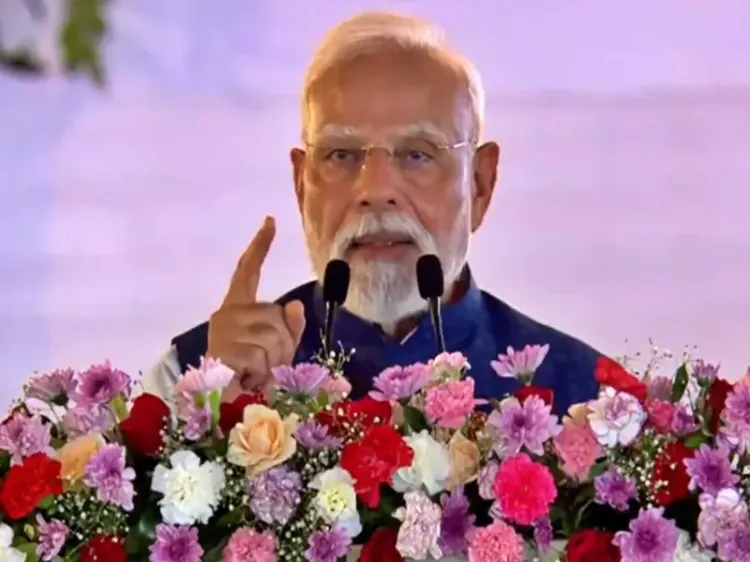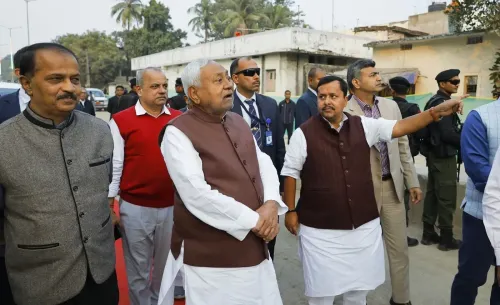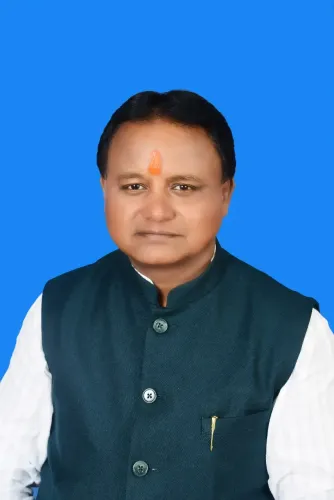Will GST Reforms Bring Double Bonus for Diwali?

Synopsis
Key Takeaways
- Next-generation GST reforms promised by PM Modi aim to benefit citizens this Diwali.
- Introduction of a two-slab GST system of 5% and 18%.
- Focus on reducing prices for the poor and middle class.
- The GST Council is set to meet in September for proposal approval.
- Anticipated economic boost through increased consumption.
New Delhi, Aug 17 (NationPress) Prime Minister Narendra Modi stated on Sunday that citizens of the nation will enjoy a dual benefit this Diwali due to the upcoming reforms in GST, which aim to decrease prices of goods and services, thus benefiting the underprivileged and middle-class families.
During the inauguration of two significant highway projects in Delhi, the Prime Minister emphasized, “For us, reform signifies the enhancement of good governance, and we are persistently concentrating on reforms.”
He revealed that numerous substantial reforms will soon be implemented to facilitate both daily life and business operations.
“In line with this initiative, a next-generation reform in GST is in the works. This Diwali, citizens will experience a double benefit through the GST reform,” PM Modi noted.
He mentioned that the complete framework has been communicated to all states and expressed optimism that all states will collaborate with this initiative from the government of India.
The Prime Minister called for the prompt completion of this process to ensure that “this Diwali can be made even more memorable.”
He added that the government aims to simplify GST further and adjust tax rates, indicating that the advantages of this reform will reach every household, particularly the poor and middle class. Entrepreneurs of all scales, along with traders and businesspersons, will benefit from these modifications.
Meanwhile, the Finance Ministry on Friday submitted its proposal to the GST Council to introduce two GST rates of 5 percent and 18 percent across all goods moving forward, as per government sources.
This proposed two-slab system will replace the current four slabs in the GST regime, effectively eliminating the 12 percent and 28 percent slabs.
Items included under the reduced GST rate of 5 percent will encompass essential goods utilized by the general public, health-related items, handicrafts, and insurance. Conversely, other goods, such as manufactured products like refrigerators and TVs, will fall under the 18 percent slab.
However, luxury and sin goods, such as cigarettes, tobacco, sugary drinks, and pan masala, will remain under a distinct GST category of 40 percent.
The government believes that this GST rationalization will significantly enhance consumption and stimulate economic growth.
The GST Council, comprising finance ministers from various states, is expected to convene in September to approve this proposal.
This proposal was initiated after Prime Minister Narendra Modi announced during his Independence Day address from the Red Fort that next-generation GST reforms would be revealed by Diwali, providing substantial tax relief to the common people and benefiting small enterprises.
Key areas pinpointed for these next-generation reforms involve the rationalization of tax rates to advantage all societal sections, especially the common man, women, students, the middle class, and farmers.
Among the proposed changes is the reduction of taxes on items used by the common man and aspirational goods. This would elevate affordability, stimulate consumption, and broaden accessibility to essential and aspirational goods for a larger population.
The cessation of the compensation cess has created fiscal space, offering greater flexibility to streamline and align tax rates within the GST framework for long-term sustainability, as stated by the ministry.
The adjustment of inverted duty structures aims to synchronize input and output tax rates, thereby reducing the accumulation of input tax credit. This would bolster domestic value addition.





